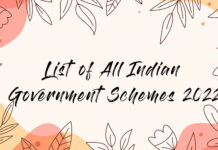VEDIC AGE
Rig Vedic Age (1500-1000 B.C.)
- The Early Vedic period is known from the Rig Veda.
- The Rig Veda refers to Saptasindhu or the land of seven rivers. This includes the five rivers of the Punjab, namek Jhelum, Chenab, Ravi, Beas and Sudej along with the Indus and Saraswathi.
- Historians view that the Aryans came from Central Asia. They entered India through the Khyber pass between 2000 B.C. and 1500 B.C. They first settled in seven places in the Punjab region which they called Sapta Sindhu. Slowly, they moved towards the Gangetic Valley.
- The Aryan Civilisation was a rug civilisation.
Vedic Literature
- The word ‘Veda’ is derived from the root ‘yid’, which means to know and si m Les
‘superior knowledge’. - The Vedic literature Vedas – Rig, Yajur, Sama and Atharva.
- The Rig Veda is the earliest of the four Vedas divided into 10 mandatas and it consists of 1028 hymns. The hymns sung by Hotri in praise of various gods.
- The Yajur Veda consists of various details of rules to be observed at the time of sacrifice. Its hymns were recited by Adha war’s.
- The Sama Veda is set to tune for the purpose of chanting during sacrifice. It is called the book of chants and the origins of Indian music are traced in it. Its hymns were recited by Udqatri.
- The Atharva Veda contains details of rituals.
- Besides the Vedas, there are other sacred works like the Brahmanas, the Aranyakas, the Upanishads, and the epics Ramayana and Mahabharata.
Political Organisation
- During this period, the kingdom was tribal in character. Each tribe formed a separate kingdom.
- The basic unit of political organisation was Dula or family.
- The highest political unit was called jaria or tribe.
- There were several tribal kingdoms during the Rig Vedic period such as Bharatas, Matsyas, Yadus and Purus. The head of the kingdom was called as rajah or king.
- There were two popular bodies called the Sabha and Samiti. The former seems to have been a council of elders and the latter, a general assembly of the entire people.
Social Life
- Family was the basis of the society.
- The head of the family was known as grihapathi.
Economic Condition
- The Rig Vedic Aryans were pastoral people and their main occupation was cattle rearing. Their wealth was estimated in terms of their cattle.
- Carpentry was another important profession .
RELIGION
1. The important Rig Vedic gods were Prithvi (Earth), Agni (Fire), Vayu (Wind), Varuria (Rain) and Indra (Thunder).
2. Indra was the most popular among the during the early Vedic period.
3. There were also female gods like Aditi and Ushas. There were no temples and no idol worship during the early Vedic. period.
Rigvedic Rivers
|
RIver
|
Name in Rigveda |
|
Indus
|
Sindhu
|
|
Jhelum
|
Vitasta
|
|
Chenab
|
Asikni
|
|
Ravi
|
Parushini
|
|
Beas
|
Vipasa
|
|
Sutlej
|
Sutudri
|
|
Gomati
|
Gomal
|
|
Saraswati
|
Sarasvati
|
|
Ghaggar
|
Prishadavati
|
LATER VEDIC PERIOD (1000-600 B.C.)
1. This age is also called as the Epic Age because the two great epics the Ramayalia and Mahabharata were written during this period.
2. The Sama, Yajur, Atharva Vedas, Brahmanas, Aranyakas, Upanishads and the two epics are the sources of information for this period.
Political Organisation
1. Larger kingdoms were formed during the later Vedic period.
2. The king performed various rituals and sacrifices to strengthen his position, They include Rajasuya (consecration ceremony), Asvamedha (horse sacrifice) and Vajpeya (chariot race).
3. Kingship became hereditary.
4. Kings assmed titles like Ekrat, Sanlrat and Sarvabauma.
Economic Condition
1. Iron was used extens$vpty in ,nd this enabled the people to forests and to bring more land under cultivation. Agriculture became the chief occupation.
2. Taxes Like Pali, Sulk and Bhaga were collected from the people.
3. Wealth was calculated in terms of cows.
Social Life
1. The four divisions of society (Brahmins, Kshatriyas, Vaisyas and Sudras) or the Varna system was thoroughly established during the Later Vedic period.
2. The Ashrama system was formed to attain 4 purusharthas. They were Dharma, Artha, Kama and Moksha.
Religion
1. Gods of the Early Vedic period like Indra and Agri lost their importance. Prajapathi (the creator), Vishnu (the protector) and Rudra (the destroyer) became prominent during the Later Vedic period.







